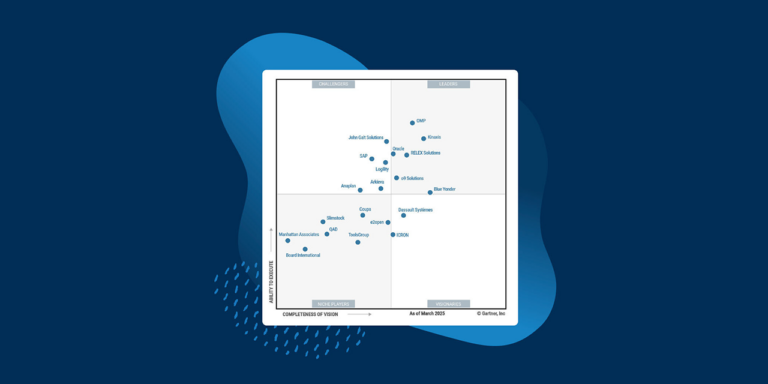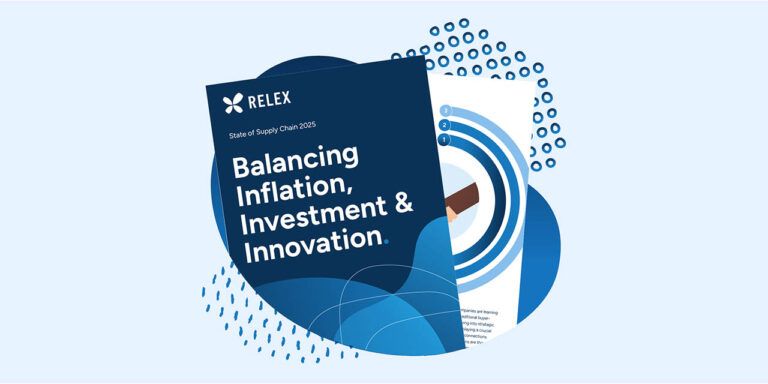How to convince your CIO to embark on your retail planning project
Sep 4, 2019 • 3 min
In an age of technology CIOs inevitably have a central role in many organizations. That’s as true in retail as it is anywhere; with industry tech trends currently including automation, omnichannel and advanced analytics.
That’s also why most CIOs really won’t be thrilled at the prospect of working with yet another software vendor. Everyone wants a piece of them and there are a dozen different demands on their time. Implementations can be hugely time-consuming and there’s plenty that can go wrong. So, how do you convince your CIO to embark on a retail planning transformation journey with you, while also ensuring its success?
We interviewed a few CIOs to see what they thought were the corner stones of new system implementations and there were a few recurring themes running through their answers.
1. Set clear goals
Without clear goals, you risk the success of your whole IT project. That’s why setting clear goals should be the first step towards winning over your CIO.
“There are often headaches in projects which stem from people not actually knowing what they want when they ask for something,” says Thor Munkeboe-Nygaard, Manager IT Systems & Projects at Europris. “The job of the CIO will be to figure out the actual needs behind the wants.” Help your CIO by thinking about the true needs of the organization, it will help in measuring its worth too.
To ensure you really know what it is that you are asking for, define high-level goals and split them into concrete and tangible milestones on a timeline.
2. Build the business case
“It’s not about using technology for technology’s sake, rather it’s all about maximizing business,” says Coop Värmland’s CIO Thomas Berglund. That’s why your next step should be to choose which concrete business KPIs that reflect your company’s overarching business strategy are expected to be improved and define how you will measure them throughout the project. It’s also worthwhile weighing up potential risks and costs.
You’ll find more tips on building a business case in our Supply Chain Transformation – The Complete Guide.
3. Explain what’s in it for them
Something that often gets overlooked is managing the cultural change. New solutions will probably change the way people work. However, people often cling onto old ways, and don’t trust a new system, at least at first. Technology is rarely the problem anymore, it’s getting people to change the way they work, and CIOs are well aware of that.
Business leaders always need to have an understanding of the most efficient way of helping people to navigate change. The best way to support change management is making sure that people understand what’s in it for them. Luckily, people are lazy, and this can be used as an advantage. If the software can eliminate some of their boring day to day tasks, allowing the person to focus on more meaningful tasks, you’re far more likely to get them to embrace the change willingly.
We’ve compiled tips on leading change initiatives in our Supply Chain Transformation – The Complete Guide.
4. Invest in data quality
In most retail planning projects, it is necessary to improve data quality. “If your data is lacking or of poor quality, getting a new solution won’t help,” says Panu Hannula, CIO at Musti Group. As they say with IT; garbage in, garbage out. For a retail planning system project to work, you have to have good, well-structured data and a good quality inventory stocktake.
Although, at the outset of a project, having clear goals is more important than perfect data. It’s equally important to be flexible and be able to make changes and adapt as you go reflecting what you find. Typically, more and more data issues will come to light as any project proceeds, which is why improving master data should be approached as an ongoing process.
The Time Is Right
Transforming your retail planning is not just about introducing a new, powerful technology but it requires a fundamental review of processes and organization. That’s why it’s important to make sure that you really know what it is that you are asking for and how it impacts the business and the organization.
The good thing is that retail businesses have never before been more focused on saving costs and adding value. The retail industry is constantly changing, so if you can assure your CIO that the project will help your company be better positioned to adapt to change and stay competitive as the industry evolves, you are very likely to get not only them but also other decision-makers onboard.



